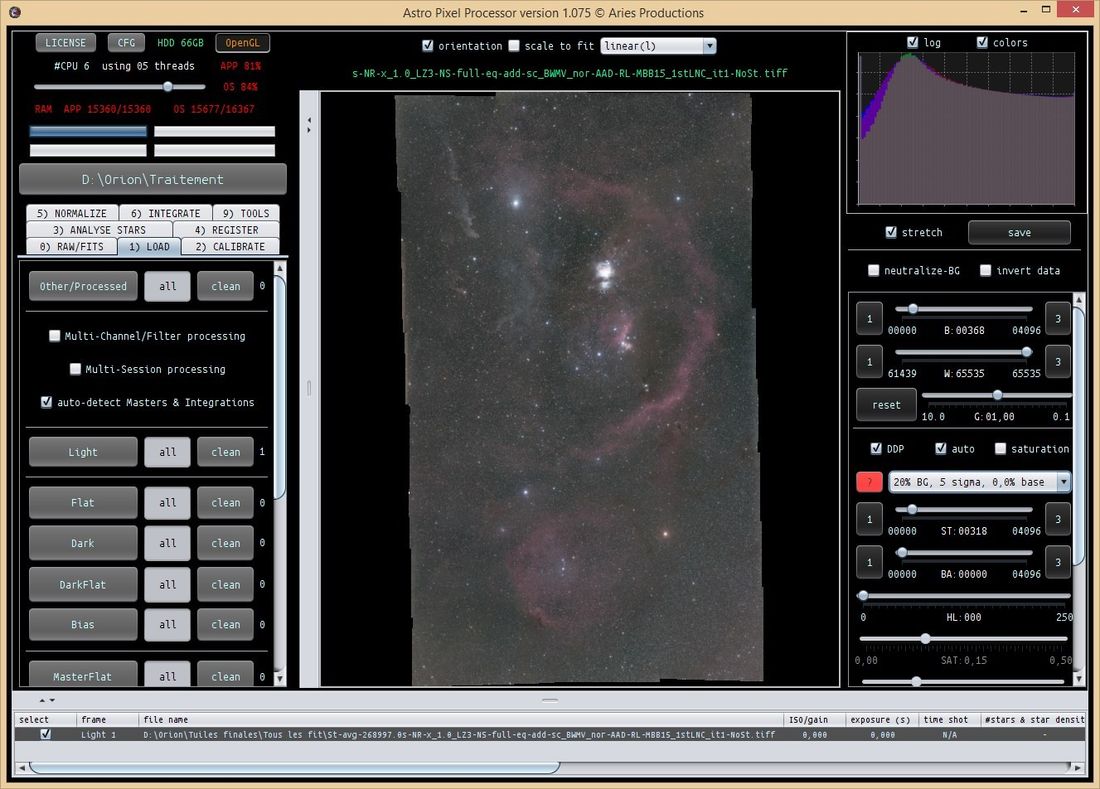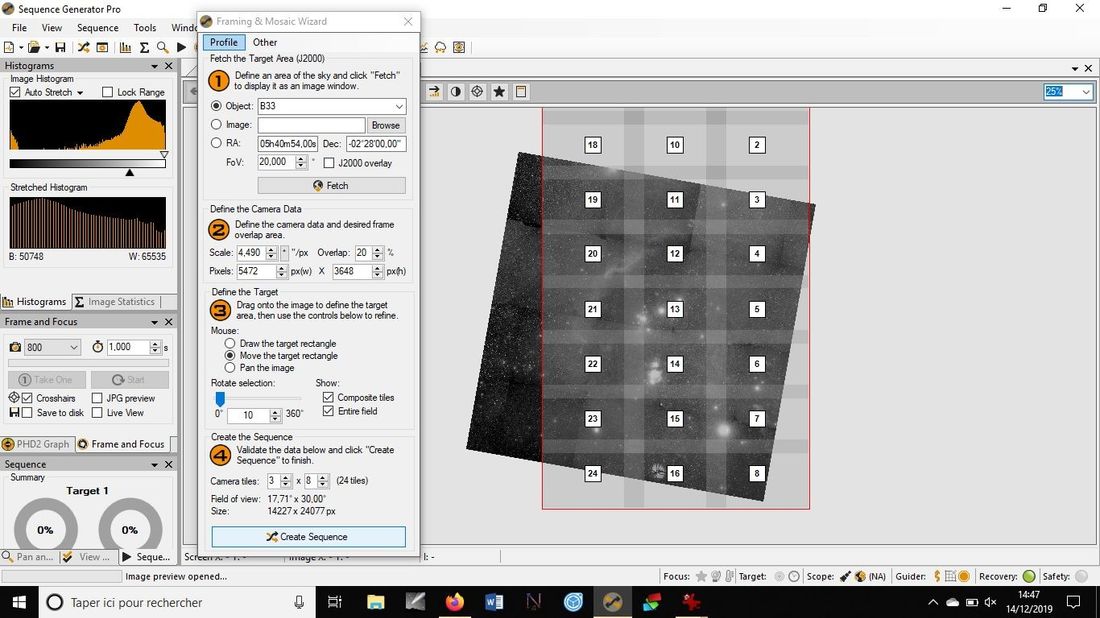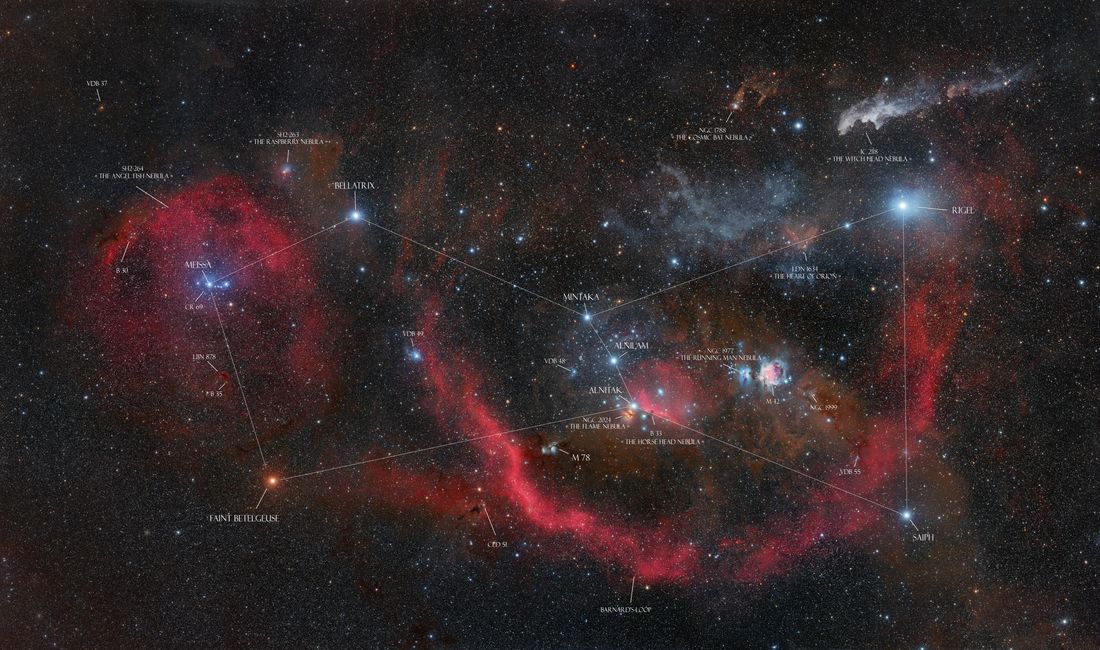Orion 360
Foreword
This 360 mega pixels image, 24 tiles for 76 hours of exposure covers almost the entire the constellation of Orion, one of the richest regions of the night sky and about 1,500 light years away from us. Visit this beautiful region of the sky, rich in golden stars, dark and colorful nebulae.
Annotated version
27 objects have been identified in the image below. Click on it to open a annotated zoomable version:
Situation
The Orion constellation is found in the same name arm of the Milky Way, in which our Solar System is found. It is located in periphery of our Milky Way.

The hunter hunt
Although visible from both hemispheres, the Orion constellation (the « hunter ») is difficult to photograph. In Europe, it is low in the sky and it can only be seen in winter when bad weather is not present. The Canary Islands could have been an interesting destination to try the cliché because the constellation is very high in the sky, much higher than Europe. But there too, the weather is too uncertain. Therefore I had to look to the southern hemisphere. But unfortunately, the southern summer is often synonymous of rainy season in deserts easily accessible from France.
After watching the weather in world during two winters, southern Atacama in Chile was chosen: unlike the north of this region or unlike Namibia for example, the chances of having clear nights at this time of year are high. So we left during the new Moon of December 2019: at this month of the year, Orion is at its highest in the sky during all the night. This made possible to photograph the constellation for 6 hours a night. In comparison, the months of November or January allow only 5 hours a night. So we celebrated Christmas under the stars…
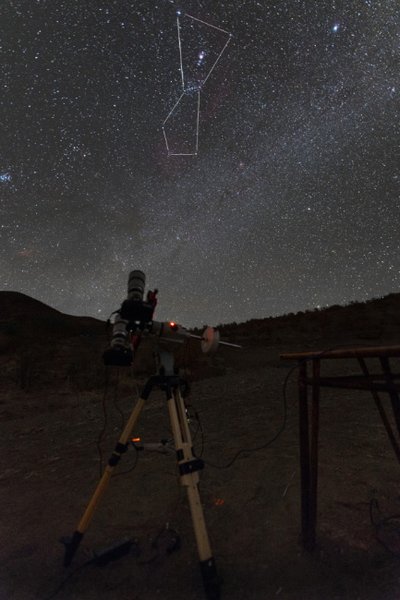
The Hacienda of stars
Located in the southern part of the Atacama Desert, we have been warmly welcomed at the Hacienda des stars, located approximately 2 hours east of the town of Ovalle. A completely isolated place, with an extraordinary starry sky. But above all it is a real oasis of calm and serenity since no road lead there: only a very bumpy path and only passable by 4x4 allows the access.
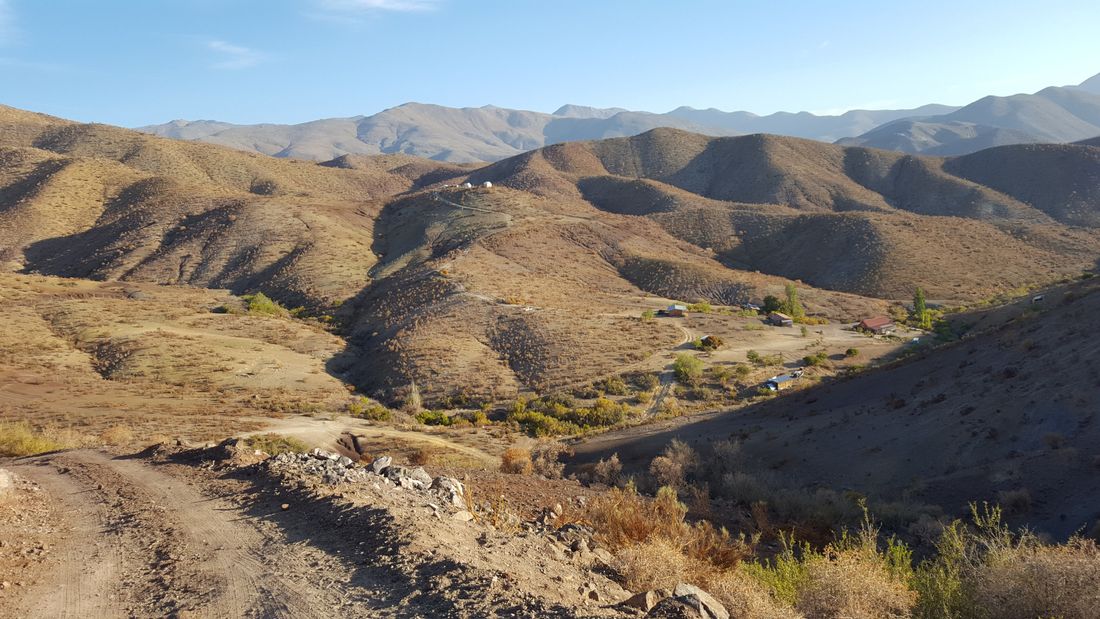
Equipment
The idea was to take the shot in only one trip with a good definition and maximum exposure time for a moderate cost:
- In order to cover a maximum of field per tile, a 24x36mm sensor was required. My good old EOS 6D Mark I was therefore ideal…
- Due to the few nights available on site (11 nights and risk of overcast weather) and to maximize the total exposure time, I bought a second used Canon 6D Mark I. It was Astrodon modded by the company EOS for Astro. During capture, one of the two DSLR was computer controlled, while the other was in “slave” mode, driven with an intervalometer.
- On the optical side, the choice fell on two lenses Canon 300 mm F4 L non-stabilized. They are well-known in astrophotography but today they are shunned because they are old and non-stabilized. I found mine on Ebay in Japan where I found models in absolutely mint condition despite they were aged of 25 years (!).
- To avoid the unsightly egrets on the shining stars, the two lenses were diaphragm from the front at F5 (see my ebook).
- The individual exposures were 3 minutes long, so autoguiding was necessary despite a quality equatorial mount. Because of a fairly large sampling, a ZWO Mini Guider 30 mm F4 and an Atik GP camera were sufficient.
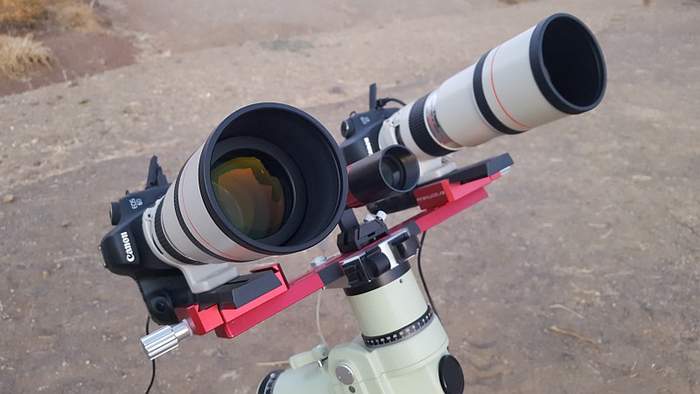
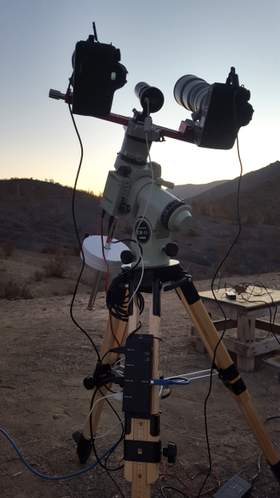
Software
The mosaic was programmed using the Sequence Generator Pro software. During acquisitions, each tile was framed by computer thanks to an astrometric reduction. The final assembly of the image was then made using the Astro Pixel Processor software.
